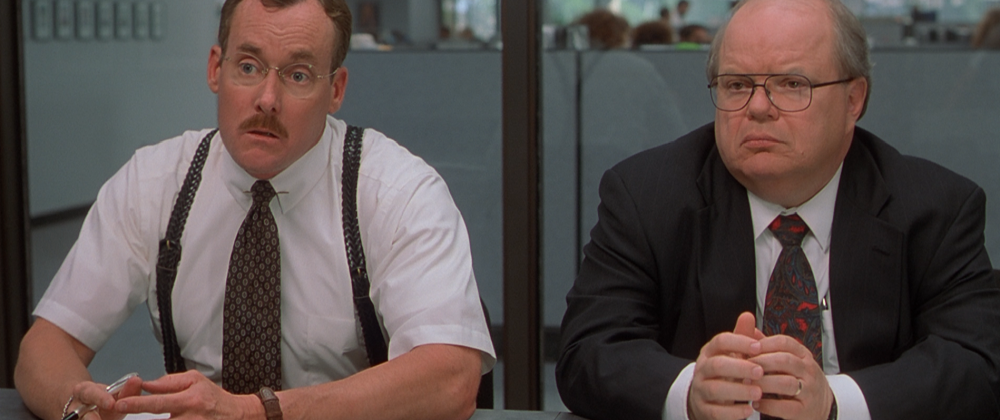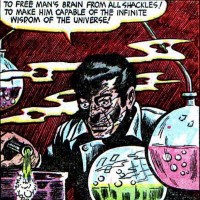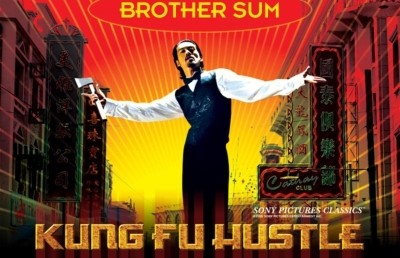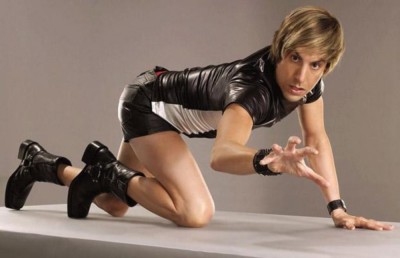He Looked Into The Grim Reaper’s Eyes and Nervously Laughed - Bergsonian Comedy Theory, Office Space, and the Fear of Losing Reality

Henri Bergson’s 1900 monograph, Laughter, attempts to outline the base elements of comedy. Bergson outlines various maxims of comedy in order to prove his main thesis that comedic texts are those which portray life in a mechanical way. This essay will review Bergson’s theory of comedy and show how it can be used in an analysis of the contemporary comedic film Office Space (Mike Judge, 1999). In light of seeing the strengths of Bergson’s theories this essay will also attempt to offer a sort of experimental modification which, instead of emphasizing the mechanical properties of the comic, explores comedy as something which threatens peoples’ psychic/symbolic realities.
Bergson’s theory of comedy makes three large claims: 1) laughter is a purely intellectual (and not emotional), 2) laughter is used to correct behavior in society and, 3) comedy (that which makes us laugh) can most often be understood as “the mechanical encrusted upon the living” (84). In saying that laughter is purely of the intellect Bergson is trying to understand the “absence of feeling” (63) that accompanies laughter. While we may empathize with comedic characters in stories, Bergson says, we put this aside during moments of the story where we laugh at them – we have a “momentary anesthesia of the heart.” (64) There seems to be a strong element of truth to this, especially when we consider that film comedies can be set in the most grim of situation –prison, war, and even the holocaust. While in real life we would not be able to laugh at people in these dire situations –our moral makeup, cultural or instinctual, require us to empathize and care for them–film provides us with a temporal, cultural, and spatial distance which allows us to perceive them as objects outside of our reality (even more so with cartoons). However if realism, grit, or emotionally powerful scenes are added then the ability to negotiate comedy becomes more difficult, as detail and depth makes it easier for viewers to empathize with the film’s subjects. One might be able to argue that some of the greatest comic moments are those which are able to make comedy out of this difficult reality (e.g. Borat, This is Spinal Tap, certain types of stand up, etc.); however, as a general comic principle, we can agree that emotional involvement creates an obstacle to our ability to laugh.
Bergson believes that comedy, at its core, is society’s way of correcting unproductive behavior patterns in individuals. His theory holds that people have minds with an infinite capacity when they are not preoccupied with the body and “self-preservation” (73). While our bodies are limited by biology and the laws of physics our minds have complete freedom to expand and imagine. But it is here, Bergson says, that because of laziness, absentmindedness, or weakness that we often behave in fixed patterns. Laughter, says Bergson, is society’s way of maintaining the strength of this shared psychic realm by pointing out the unnecessarily fixed patterning in people’s behavior – society sees something “rigid” (73), performs the “social gesture” (73) of laughing at it, and hence the laughed at individual is inspired by “fear” (73) to change his or her behavior improving themselves and the shared social world in the process (72-74). This aspect of comedy is obvious to anyone who has been laughed at for doing something stupid. Comedy is full of characters that are pathetic, foolish, weak, or socially deficient in some way. We laugh at these characters as they remind us of general patterns we see in real life people (comedy is always pointed at the general, says Bergson) (157) and hence we are participating in the correction of general or shared social behavior patterns. This could be why the happy ending is so common in comedy – the director wants to give us the experience of some sort of social weakness being corrected (perhaps if it is uncorrectable it shows that it is not weak and so, un-comic).
The third major claim, closely related to this “rigidity” of character, is that comedy is fundamentally about the “mechanical encrusted upon the living” (84). Bergson looks at multiple comic forms (the comic character, jokes, what children find funny, etc.) and continually finds this idea at the root. His first example is the humor in watching a running person trip over a rock. What makes us laugh, says Bergson, is that instead of the person acting with a full mind and watching where they are going they act like absentminded machines, “involuntarily” falling because of “rigidity” and “momentum” (66). Another example when we laugh at someone because they look funny physically (his example is the hunchback, but an important point is we laugh only to the extent that we can imitate these people). Because we can imitate them, Bergson says, it appears to us that they are acting based on a behavior pattern (the mind instead of the body) and hence we laugh as a form of corrective gesture. In dealing with film comedy we can see Bergson’s thesis most clearly in the body-language of physical comedians. Buster Keaton’s films have him shooting and springing around sets, running faster than life, and interacting with intricately constructed mechanical sets where much of the laughter comes from seeing him become machine-like as a result. Another example is The Three Stooges as they treat each other not like people but as unfeeling objects. They tumble, whack against each other, crank each others’ body parts, walk in circles, and collide (all with mechanical sound effects) making it quite obvious that Bergson’s “ mechanical encrusted upon the living” thesis can go a long way in pinpointing what it is that makes film’s funny.
Mike Judge’s 1999 comedic film Office Space is a good example of Bergsonian comedy. The film is about the humiliating and depressing experiences of working a 9-5 cubicle job where all the main characters despise their lifestyles but continue to live them because they imagine they have no choice. Things change when a hypnotism-session-gone-wrong puts Peter (the main protagonist, played by Ron Livingston) permanently in a relaxed, Zen-like state and he decides from that point on he will live a worry free life and only do what keeps him stress-free and happy. While other’s at the office are working extra hard to keep the jobs they hate, Peter shows up when he feels like it, ignores work protocol, and talks to his superiors as equals. The irony becomes that Peter is the only one who succeeds and does well while all his friends are laid off. The most obvious connection to Bergson here is in the fact that the office workers are living a mechanical like existence based on their behavioral choices. Human beings, at our most free, are not continually bothered about reports or forced to use aggravating fax machines that absurdly never do the job they are supposed to facilitate. The film demonstrates how many people in the real-world choose to live in this automaton-like way and we laugh at this weakness in a way that seems to be laughing and correcting the real-world. Another example is in the opening scene of the film where Peter, Samir (Ajay Naidu), and Michael Bolton (David Herman) are sitting in their cars frustrated by the traffic jam, which is so slow that an old man in a walker moves more quickly. The people in their cars are forced into an “involuntary” stillness. As they sit inching forward in their cars they appear as part of a lifeless, rigid chain of events. Ironically, the weakness we are laughing at in this scene is an inefficiency –rows of slow moving cars– which mimicks the hallmark of efficiency: the assembly line.
Another example, perhaps more subtle, is when one employee, Michael Bolton, expresses his extreme annoyance at continually being asked if he is related to the famous singer of the same name, whom he considers to be “a no talent ass clown.” The fact that the two names are similar is already fitting into Bergson’s theory (where repetition and coincidence are signs of mechanical-like activity) however we also read a certain rigidity and un-free human behavior in the way that Michael repeatedly responds in the same way (with automatic annoyance) every time the subject is brought up. “Why should I change (my name) he’s the one who sucks,” he says. This stubborn refusal to change is a hallmark of absentminded behavior. All of this “mechanical” behavior is signified through his facial expressions, voice, and body language culminating into laughable gags and scenes.
Despite the supporting evidence, Bergson’s theory does not seem like it can explain all comic activity, something he himself realized when he referred to his “rigidity is the comic and laughter its corrective” (74) theory as a “leitmotiv” and not a “definition” (74). The most evident sign that “the mechanical encrusted upon the living” theory might not hold up universally is that, as a metaphor, it seems very much a child of its time. At the end of the nineteenth century the Western world was undergoing dramatic technological developments which drastically impacted on social custom and behaviour (developments in transportation, manufacturing, communications, etc.). The term “mechanical” which grows out of this historical condition may limit its ability to talk exclusively and continually to laughter, a phenomena that no doubt existed in pre-technological homosapien. A rewording and rethinking of this metaphor might give us a better concept to further explore the comic. Bergson himself mentions something interesting early on in his essay and then moves forward without returning to it. When commenting on the social gestural aspect of comedy, he describes the “material and “immaterial” aspects of the individual. As social beings, he writes, we take ourselves out of “the struggle for life” (the material aspect of ourselves/the body) and instead “adapt” (73) ourselves to the shared social realm of ideas (the immaterial aspect of ourselves/the mind) in a sort of social contract necessary for the complex functioning of organized society. As society attempts to work together, Bergson says, we use comedy as the appropriate “immaterial” means for getting this “immaterial” realm to act as a harmonious whole (72-74). Perhaps these material and immaterial realms could be further elucidated through Ernest Becker’s idea of the human being as “half animal and half symbolic” (Becker 26).
In his 1977 book, The Denial of Death, Ernest Becker describes the human dilemma of being “gods with anuses” (51) – infinitely minded yet physically limited in our bodies. In summary, Becker believes that people build their symbolic worlds (language, ideas, concepts) around a fear of death (the body, decay, meaninglessness) and that idea systems are designed to give us a story, or “grand illusion” (56), of immortality. Becker sees religion, government, nationalism, race ideas, career choices, beliefs in love, and just about any form of immaterial concern as being necessary (“vital”) lies to keep us sane. For example, the reason we believe in an afterlife is because it gives us a way to live a life, something to keep us going every day (if we had no lie what would be the point?). His theory explains the zealousness around things like debates around evolution and religious warfare where the reason people get worked up to the point of stress and violence is that their entire immortal existence is at stake. As an experiment in deconstructing Bergson’s theory, we can put comedy into this framework and get fruitful results. Maybe comedy, instead of fundamentally seeing rigidity in the realm of the symbolic, is instead more about finding flaws and weaknesses in symbolic reality constructions and, as a result, inching closer to revealing the meaninglessness in life. The reason why comedy is continually evolving and has proven difficult to pin down in one theory is because it works as a sort of antithesis to all theory –it demonstrates all symbolic systems as inherently human-made and hence fallible. Rather than placing comedy as a creator of puppet-like illusion (making the living seem mechanical), this approach reconsiders comedy as a revealer of truth (as it deconstructs lies). It is certainly not uncommon to hear “it’s funny because it’s true” when witnessing a standup comedian’s act. Because our symbolic reality (which is inherently a lie) is vital to our sanity, the act of revealing it as simple, weak, or flawed, threatens us and puts us into a state of fear. This would go a long way in explaining why laughter has often been associated with aggression and fear in other analyses (like Freud for example). While this theory supports Bergson’s “social gesture” argument, it rejects the comedy-as-only-intellectual argument, and modifies the mechanical metaphor to make it more universal. Instead of correcting weakness in “the mechanical encrusted upon the living,” laughter now corrects weakness in the symbolic/immaterial man-made world which operates over our material (perhaps “symbolic encrusted upon the living”). Laughter, in this theory, exists as a sign of the violence involved in attacking symbolic reality systems of individuals. If we try to show someone that their fundamental thoughts are foolish then we are attacking the core of their necessary lie. This stress explains why people don’t want to be laughed it – they want to save themselves the trouble of having to readjust their existence in some fundamental, energy consuming manner.
This experimental revision can be reapplied to Office Space. The entire plot of the film is about the way we think about life on the grand scale and, subsequently, act out on those beliefs. What is funny about Office Space, in general, is that it shows us how our youthful dreams of great careers and wonderful lifestyles often amount to monotony, disrespect, and an overall bad life. While all the characters are clinging to their jobs and hopes of riches and a decent retirement, Peter, who has disregarded this plan, strangely rises to success and is happy as a result. This is further echoed in the happiness of Lawrence, his beer drinking couch potato friend, who rejects the corporate lifestyle yet is the most content one in the film acting as another element which debases the corporate lifestyle plan. While it is truth that a Bergsonian mechanical like function seems to be at play in the opening traffic jam scene what is perhaps more fundamental is the absurdity that modern society, in its supposed immortal-like plan of ever improving, has instead evolved the world into a place where every morning people are put in torturous situations they can’t get out of (the laughable being the threat to our way of technological life). In the scenes where Michael Bolton shows frustration about his name we might say that this notion of two identical beings is funny because it shows us how absurd the naming system of society is and, hence, how absurd society is; threatening the grand scheme of thought which we all share (the social/symbolic realm of the mind). Continually, the scenes of Office Space show that the corporate lifestyle (which many in the real world are living) is foolish and so the film acts as a threat to this way of life and, presumably, influences society to change its ways and construct stronger reality systems.
Bergson’s theory elucidates many patterns of comedy and it is still a useful tool for analyzing a contemporary film such Office Space. While his theory has many strengths it still leaves room for adjustment and this essay has provided a modification. While too brief and underdeveloped to be a full-fledged theory, the idea of comedy as reality debaser seems potentially fruitful and it might be a good stepping stone to explore learning and laughter. The idea of relating learning (which can so often be work) to laughter (which is so often fun) seems like something worthwhile.
Works Cited
Becker, Ernest. The Denial of Death. New York: Free Press, 1973.
Bergson, Henri. “Laughter.” Comedy. Ed. Wylie Sypher. New York: Doubleday Anchor Books, 1956.
Freud, Sigmund. Jokes and Their Relation to the Unconscious. New York: Norton, 1989.




_400_258_90_s_c1.jpg)









